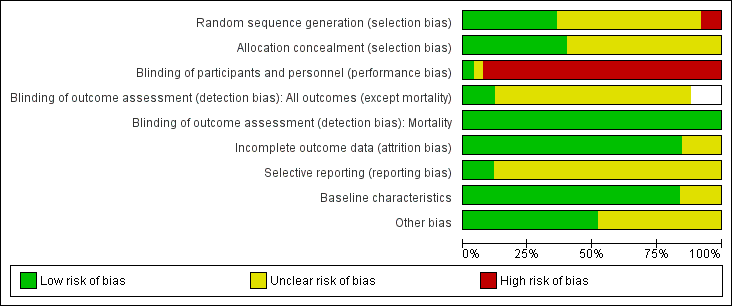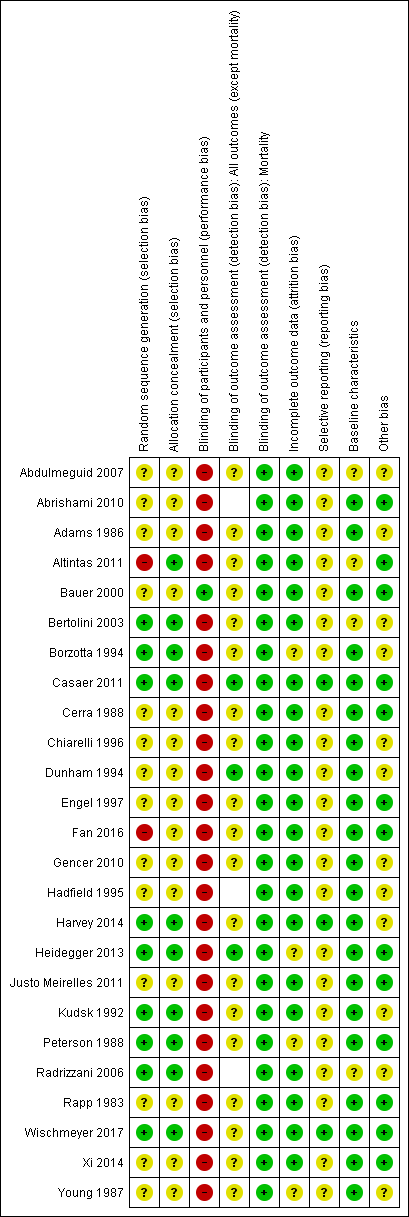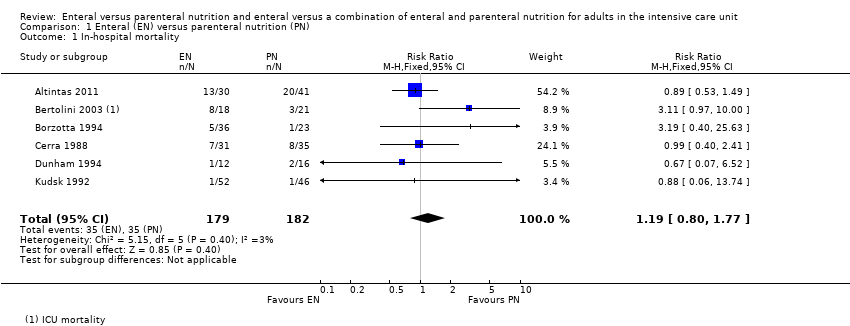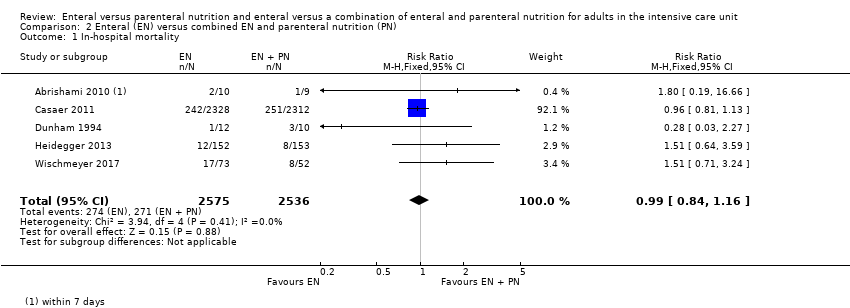Related content
Related reviews and protocols
Paulina Fuentes Padilla, Gabriel Martínez, Robin WM Vernooij, Gerard Urrútia, Marta Roqué i Figuls, Xavier Bonfill Cosp | 30 October 2019
Sana Alkhawaja, Claudio Martin, Ronald J Butler, Femida Gwadry‐Sridhar | 4 August 2015
Mario I Perman, Agustín Ciapponi, Juan VA Franco, Cecilia Loudet, Adriana Crivelli, Virginia Garrote, Gastón Perman | 4 June 2018
Louise Rose, Marcus J Schultz, Chris R Cardwell, Philippe Jouvet, Danny F McAuley, Bronagh Blackwood | 10 June 2014
Emma MJ Borthwicka, Christopher J Hilla, Kannaiyan S Rabindranath, Alexander P Maxwell, Danny F McAuley, Bronagh Blackwood | 31 January 2017
Rajesh M Shetty, Antonio Bellini, Dhuleep S Wijayatilake, Mark A Hamilton, Rajesh Jain, Sunil Karanth, ArunKumar Namachivayam | 21 February 2018
Karen EA Burns, Francois Lellouche, Rosane Nisenbaum, Martin R Lessard, Jan O Friedrich | 9 September 2014
Bronagh Blackwood, Maeve Murray, Anthony Chisakuta, Chris R Cardwell, Peter O'Halloran | 31 July 2013
Alba M Antequera Martína, Jesus A Barea Mendozaa, Alfonso Muriel, Ignacio Sáez, Mario Chico‐Fernández, José M Estrada‐Lorenzo, Maria N Plana | 19 July 2019
Suzanne Forsyth Herling, Ingrid E Greve, Eduard E Vasilevskis, Ingrid Egerod, Camilla Bekker Mortensen, Ann Merete Møller, Helle Svenningsen, Thordis Thomsen | 23 November 2018
Cochrane Clinical Answers
Jane Burch, Sascha Köpke | 30 November 2018






























